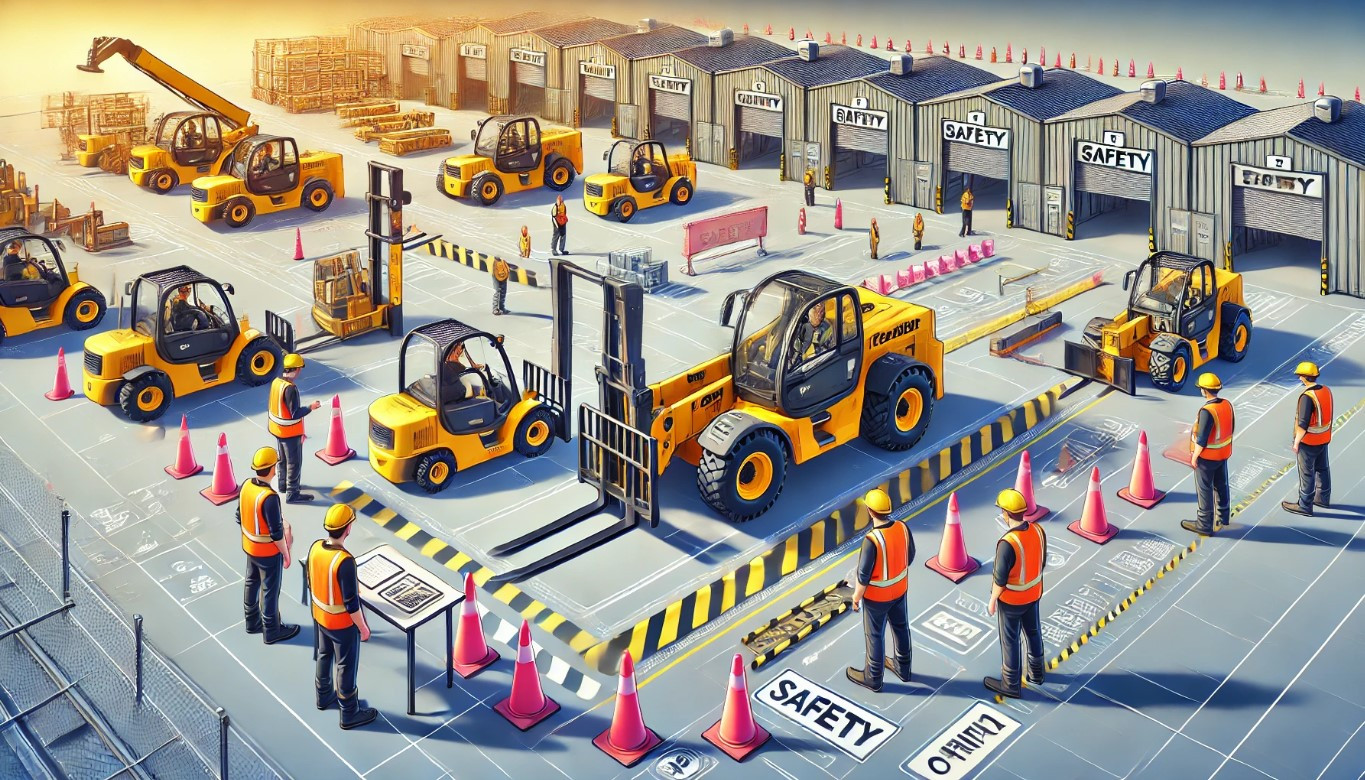Telehandlers, also known as telescopic handlers, are versatile machines that combine the capabilities of a forklift, crane, and work platform. Their adaptability makes them indispensable in construction, agriculture, and warehousing. However, operating these powerful machines requires proper training to ensure safety and efficiency.
At Get Drivers Ed, our telehandler training courses are designed to equip operators with the skills and knowledge they need to handle these machines confidently. From mastering basic operations to understanding safety protocols, here’s what you can expect to learn.
1. Understanding the Basics of Telehandler Operation
Before diving into advanced techniques, it’s crucial to understand the fundamentals of telehandler operation.
What Is a Telehandler?
A telehandler is a multi-functional lifting machine equipped with a telescopic boom that can extend to reach heights or move loads over obstacles.
Attachments such as forks, buckets, and work platforms make telehandlers highly versatile.
Key Features to Familiarize Yourself With:
Boom Operation: Learn how to extend, retract, and maneuver the telescopic boom.
Load Capacity Charts: Understand how to read charts that indicate the machine’s safe lifting limits.
Control Panel: Get acquainted with the machine’s controls, including joystick functions and safety indicators.
By mastering these basics, you’ll be ready to handle more complex tasks. At Get Drivers Ed, we emphasize foundational knowledge to build confidence and competence.
2. Mastering Safe Lifting and Loading Techniques
Safety is a top priority when operating a telehandler, especially when lifting heavy or awkward loads.
Lifting Best Practices:
Positioning: Ensure the telehandler is on stable ground and the load is properly centered.
Weight Limits: Always adhere to the manufacturer’s load capacity guidelines.
Visibility: Maintain a clear line of sight or use spotters when visibility is obstructed.
Loading Techniques:
Use attachments suited for the specific task, such as buckets for loose materials or forks for pallets.
Avoid sudden movements that could destabilize the load or machine.
Secure loads properly to prevent shifting during transit.
These techniques are critical for preventing accidents and ensuring efficient operations.
3. Navigating Challenging Terrain
Telehandlers are often used in environments with uneven or rough terrain, such as construction sites and farms.
Terrain Navigation Tips:
Drive Slowly: Reduce speed on uneven ground to maintain control and prevent tipping.
Adjust for Slopes: When driving on inclines, keep the load uphill to maintain stability.
Avoid Obstructions: Inspect the path ahead to ensure it’s clear of obstacles and hazards.
By practicing these techniques during training, operators gain the confidence to navigate challenging worksites effectively.
4. Attachment Management and Versatility
One of the standout features of telehandlers is their compatibility with a wide range of attachments.
Common Attachments:
Forks: Ideal for lifting pallets and transporting materials.
Buckets: Used for scooping and moving loose materials like sand or gravel.
Work Platforms: Provide elevated access for tasks like maintenance or construction.
Learning Attachment Management:
Switching Attachments: Learn how to safely remove and install different attachments.
Attachment Maintenance: Understand the importance of regular inspections to ensure functionality.
At Get Drivers Ed, we provide hands-on training to help operators make the most of their telehandler’s versatility.
5. Importance of Pre-Operation Inspections
Conducting a thorough inspection before using a telehandler is essential for identifying potential issues and preventing accidents.
What to Inspect:
Tires and Wheels: Check for damage, wear, and proper inflation.
Hydraulic Systems: Look for leaks and ensure hoses are securely connected.
Boom and Attachments: Inspect for cracks, bends, or other signs of wear.
Why It Matters:
Regular inspections reduce the risk of mechanical failure, ensuring both safety and productivity. At Get Drivers Ed, we teach operators how to perform comprehensive pre-operation checks.
6. Advanced Skills: Emergency Procedures and Load Stabilization
Beyond basic operations, telehandler training also covers advanced skills to handle emergencies and challenging situations.
Emergency Procedures:
Learn how to safely shut down the machine in the event of a malfunction.
Understand protocols for evacuating the cab during emergencies.
Load Stabilization:
Adjust boom positioning to stabilize loads on uneven ground.
Use outriggers or stabilizers when lifting heavy loads at extended heights.
These advanced skills ensure operators are prepared for unexpected scenarios, enhancing workplace safety.
Conclusion: Elevate Your Skills with Get Drivers Ed
Operating a telehandler requires a blend of technical expertise, practical skills, and a strong focus on safety. From understanding the basics of telehandler operation to mastering advanced techniques like load stabilization and emergency procedures, comprehensive training is essential.
At Get Drivers Ed, we provide telehandler training courses that combine expert instruction with hands-on experience. Whether you’re new to telehandlers or looking to refine your skills, our programs are designed to help you succeed.


